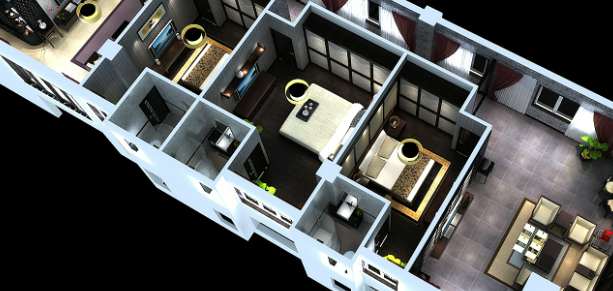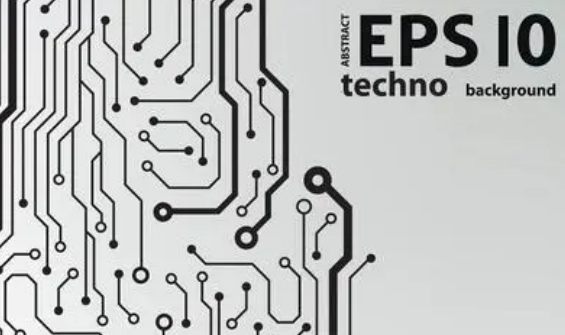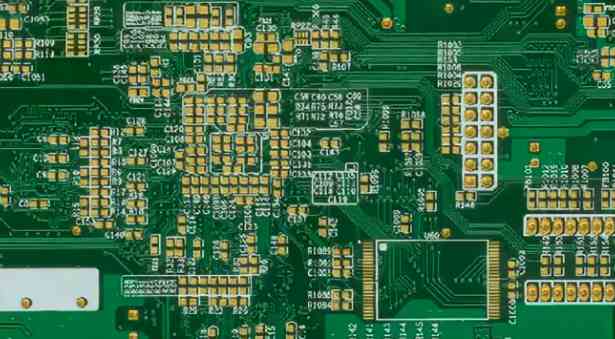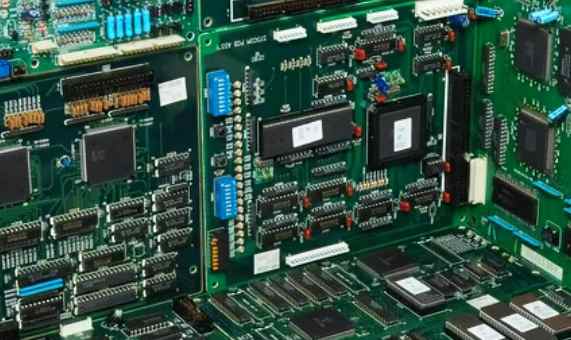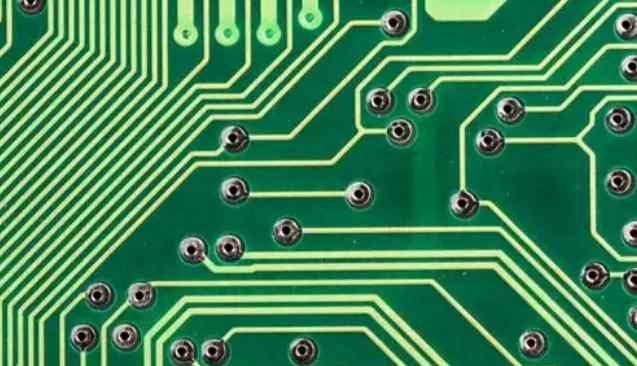
The difference between copper substrate and aluminum substrate
Aluminum substrate is a kind of metal base copper-covered plate with good heat dissipation function. Generally, a single panel is composed of three layers, which are circuit layer (copper foil), insulation layer and metal base layer. Common in LED lighting products. There are positive and negative sides, the white side is welded LED pin, the other side shows aluminum color, generally coated with thermal coagulation and thermal part contact. Ceramic substrate and so on.
Copper substrate is a kind of copper coated metal copper substrate, and aluminum substrate overall structure is very similar, it has good thermal conductivity, electrical insulation performance and mechanical processing performance, including metal layer, bonding layer (insulation layer), conductive wire layer, three factors are indispensable. The metal layer (block) mainly plays the role of heat dissipation, shielding, covering type or grounding. Due to the difference in the properties of copper and aluminum and the corresponding processable process of PCB, copper substrate has more performance advantages than aluminum substrate.
[Application of copper-based circuit board]
Copper substrate circuit layer requires a large current carrying capacity, so thicker copper foil should be used, the thickness is generally 35μm~280μm; Thermal insulation layer is the central technology of copper substrate. The central thermal conductivity component is composed of aluminum oxide and silicon powder and polymer filled with epoxy resin. It has low thermal resistance (0.15), excellent viscoelastic property, thermal aging resistance, and can withstand mechanical and thermal stress. The metal base is the supporting member of the copper base plate, which requires high thermal conductivity. It is generally copper plate, and copper plate can also be used (copper plate can provide better thermal conductivity), which is suitable for drilling, punching, shearing and cutting and other conventional mechanical processing.
[Advantages of copper-based circuit boards]
The copper substrate circuit layer has a great load bearing capacity, so the copper foil thickness of 35μm ~ 280μm is used. The insulation layer is a central technology of copper substrate, the central component is composed of two alumina and silica filled epoxy resin composition and polymer three thermal conductivity, low thermal resistance (0.15). With viscoelastic, heat resistant aging properties, can withstand mechanical and thermal stress. Copper foundation layer is a copper base supporting member with high thermal conductivity, usually copper, can also use copper (copper, which can provide better thermal conductivity), suitable for drilling, punching, cutting and other conventional mechanical processing
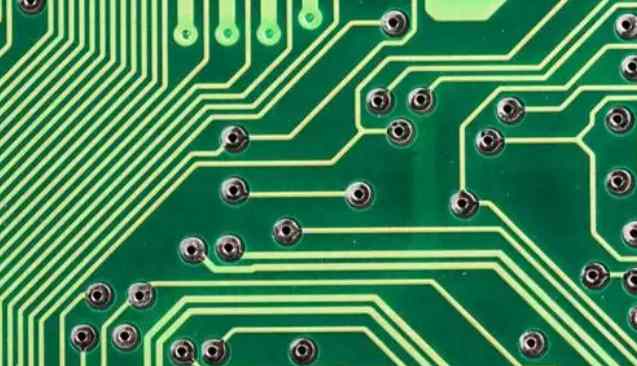
PCB common unit conversion table
Source: PCB Date: 2022-04-29 Page Views: 496
I. Length unit:
1ft (ft) = 12in (inch)
1inch (inch) = 1000mil (mil)
1mil (mil) = 1000u "(micro inch)
1m (m) = 10dm (decimeter)
1dm (decimeter) = 10cm (cm)
1cm (cm) = 10mm (mm)
1mm (mm) = 1000um (micron)
lum (Micron) = 1000nm (nanometer) = 1000000pm (picm)
1inch (in.) = 25.4mm (mm.)
1mm (mm) = 39.37mil (mil)
1mil (mil) = 0.0254mm (mm)
1mm (mm) = 0.039in (inch)
1um (micron) = 39.37u "(micro inch)
1u "= 0.0254um (micron)
1m (m) = 3.28ft (ft)
1ft (ft) = 0.305m (m) =3.05dm (decimeter)
1mil (mil) = 25.4um (micron)
1um (micron) = 0.0394mil (Mil)
1yard (yard) =0.9144m
Ii. Area Unit:
1ft2 = 144in2
1m2 = 10.76ft2
1ft2 = 9.29dm2
1ASD = 9.29ASF
1ft2 = 92903mm2
1ft2 = 0.0929m2
Iii. Weight unit:
1 OZ (oz) = 28.35g (g)
1 OZ≈35.94um
H/H copper foil ≈18um/18um(copper foil thickness)
1kg = 1000g = 2.2046Ib (lb)
1 ton = 1000kg = 1m3 water mass
1 Ib (lb) = 453.6 g
1 pound = 16 ounces = 0.4536kg
1g = 1000mg = 0.0353 oz
1 Ib=16oz
1kg (kg force) = 9.8N (Ox)
1KN = 1000N = 9800kg (kg force)
Definition of "1/1" copper foil: A copper foil with an area of 1 square foot weighs 1 ounce.
Iv. Volume unit:
1GL (gal, imperial) = 4.55L
1 liter is equal to 1000ml
1oz/gal = 7.49g/1
1GL (gal, US) = 3.785L
1m3 is equal to 1000 liters
1pint =1.136L
V. Pressure unit:
1 kg/cm2 = 14.22 psi
1psi = 0.0704kg/cm2
1 mpa = 1000 kpa
1KPa=1000Pa
1bar (bar) = 100000pa (Pa)
1MPa=10bar
0.1MPa = 1.02kg/cm2
0.1 Mpa = 14.503 psi
1 bar = 1.02 kg/cm2
1MPa = 145.037psi
1MPa = 10.2kg/cm2
Pound force per square inch: lb/in2
Millimeter water column: mm (mm) H2O
760 0℃mm (mm) Hg = 1.03323kg/cm2 = 1atm (physical atmosphere)
Vi. Specific gravity Unit:
Pomeridou oBe=144.3-144.3/ specific gravity SG.
SG. specific gravity (g/cm3) =144.3/ (144.3- Pommel)
Seven, temperature unit:
1 ° C = 33.8 ° F
Conversion formula:
The freezing point of water is 32 ° F and the boiling point is 212 ° F
The freezing point of water is 0 ° C and the boiling point is 100 ° C
Viii. Hardness Unit:
Shore hardness (HS)= BHN hardness /10+12
Shaw hardness (HS)= Lowe hardness (HRC)+15
Lowe hardness (HRC)= BHN hardness /10-3
Burr hardness (BHN)= Rock hardness (HV)
Ix. Others:
1KAH=1000 ampere hours
1 ampere-hour =3600 coulombs
1AM=1 ampere-minute =60 coulombs mainly used in precious metal electroplating such as gold plating
conductivity (conductivity) : 1S (Siemens) = 1000ms/cm (millisiemens) = 1000000us/cm (microsiemens); 2us/cm = 1ppm (1mg/L CaCO3) = 1 (. f)
Hardness of water: 1meq/L (mg equivalent /L) = 28 mg/L CaO = 50 mg/L CaCO3= 2.8 German degrees = 5.0 French degrees (. f) = 0.5mm (mm) ol/L (millmol /L)
1ppm (parts per million) = 1mg/L
Raw water hardness: 3-10mg-N/L; Residual hardness of effluent: ≤0.03mg-N/L
Inlet water hardness: (9mm) ol/L) Outlet water hardness ≤0.03mm (mm) ol/L Exchange flow rate: 20-30m/h
1 centipoise (1 cp)=1 mpascal. Second (1mPa.s)
100 centipoisons (100cP)=1 poisons (1P)
1000 millipascals. Seconds (1 Mpa. s)=1 PASCAL. Second (1Pa.s)
Inductance unit: hen (H), millihen (mH), micro hen (μH), Nhen (nH), 1H=1000mH=10^6μH=10^9nH.


